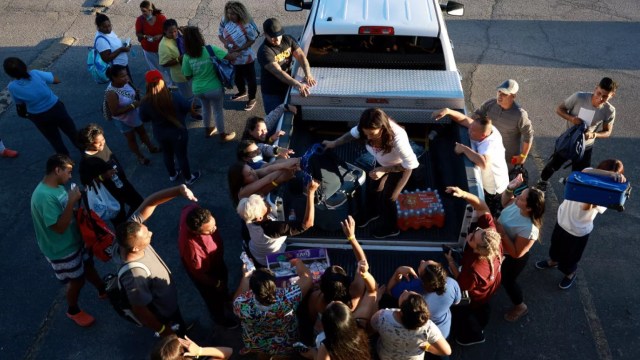
A record number of Venezuelans have been crossing into the U.S. from México in recent months.
By WLRN
Sep 26, 2022
The U.S. does not recognize the government in Venezuela. So, it can’t send Venezuelan migrants back. But border states like Texas say they can’t cope with the new arrivals.
“They’ve made this massive journey and then they sort of find themselves at this moment in which well, no, really they’re just at the beginning of the journey,” immigration reporter Molly O’Toole says.
A journey that for many involves being put on a bus or plane – headed north – for so-called sanctuary states.
“We don’t need bad actor middlemen to be busing people for political stunts. But we can help identify, like, what communities are welcoming?” Bilal Askaryar says.
Today, On Point: Lessons from América’s latest immigration tale.
Guests
Uriel García, immigration reporter with the Texas Tribune. (@ujohnnyg)
Molly O’Toole, migration and security reporter for the Los Ángeles Times, currently on sabbatical to write a book about global migration through Americas. (@mollymotoole)
Niurka Meléndez, founder of Venezuelans and Immigrants Aid, a charity supporting new arrivals to the U.S. from Venezuela.
Also Featured
Bilal Askaryar, communications coordinator for #WelcomeWithDignity, a campaign to reform the U.S. asylum system.
Bilal Askaryar is communications coordinator for #WelcomeWithDignity, a coalition of NGOs campaigning for fair treatment for asylum seekers.
For Askaryar, the most urgent crisis is the perilous journey people have to make to claim asylum in the U.S.
“People shouldn’t have to risk their lives crossing The Darién Gap to come and ask for protection at our doorsteps,” he says. “We should be able to identify the people who are in danger, well before you know they need to make that journey. Give them visas, give them the right paperwork, and help facilitate that through humanitarian corridors.”
That sort of change to the refugee and asylum system is a long way off, and would face big obstacles in Washington.
So, in the meantime, as migrants continue to arrive, what should the U.S. be doing?
Askaryar says there is room for local governments to connect asylum seekers with places across the U.S.
“We don’t need bad actor middlemen to be busting people for political stunts, but we can help identify what communities are welcoming,” he says.
Askaryar highlights poultry processing and meatpacking plants as places many refugees are finding work in América.
“We know that there’s labor shortages across the country and there are whole industries that are basically being run thanks to refugee and asylee labor,” he says.
“Those … employers basically now just hire 100% resettled refugees, because they can’t find native born Americans who want to do that work.”
…
Read More: WLRN – What’s behind the recent increase of Venezuelan migrants in Texas
…

